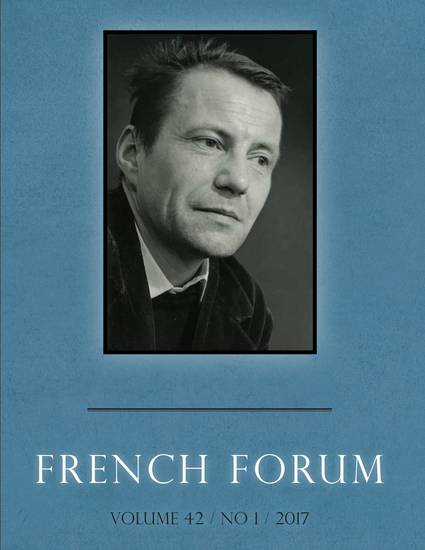
Article
Hybrid Discourse and Performance in the Old French Pastourelle
French Forum
(2002)
Abstract
When the pastourelle appears in French in the late twelfth century, some forty years after Marcabru's pioneering "L'autrier jost una sebissa," it is distinguished from its Occitan predecessors1 by two discursive features that have both made its typological classification a delicate issue2 and assured its longevity. The French pastourelle was first of all a pioneer in the mixing of social registers. Its characteristic confrontation between aristocratic narrator and shepherdess intersects both thematically and temporally with Andreas Capellanus's De amore3 and the two reflect, as Michel Zink has argued,4 preoccupations which were peculiar to France. Indeed, the pastorela did not acquire, or seek to imitate, its French counterpart's passion for staging socially transgressive amorous encounters. As the following examples illustrate, the social disparity between the two protagonists is a cornerstone of the pastourelle.
Disciplines
Publication Date
Winter 2002
Publisher Statement
French Forum is published by the University of Pennsylvania Press. For more information about this journal please visit French Forum online.
Citation Information
Christopher Callahan. "Hybrid Discourse and Performance in the Old French Pastourelle" French Forum Vol. 27 Iss. 1 (2002) p. 1 - 22 ISSN: 0098-9355 Available at: http://works.bepress.com/christopher_callahan/10/
